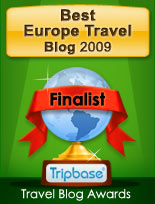 On July 14, 1789, French citizens stormed the Bastille prison in Paris and set in motion events that would abolish feudalism and lead to the proclamation of the Declaration of the Rights of Man. Centuries later (220 years, to be exact), Bastille Day is the national holiday of France, and is celebrated all over the world by Frenchmen, Frenchwomen, and Francophiles alike. Feel like joining in the fun? Here are some suggestions for how to celebrate the Fête Nationale:
On July 14, 1789, French citizens stormed the Bastille prison in Paris and set in motion events that would abolish feudalism and lead to the proclamation of the Declaration of the Rights of Man. Centuries later (220 years, to be exact), Bastille Day is the national holiday of France, and is celebrated all over the world by Frenchmen, Frenchwomen, and Francophiles alike. Feel like joining in the fun? Here are some suggestions for how to celebrate the Fête Nationale:
1. Attend the military parade that runs along the Champs-Elysées. Though it is often ignorantly bashed in the U.S., the French military is in fact one of the world's most elite, sophisticated, and technologically-advanced fighting forces. Check out their equipment, their soldiers, and wave after wave of jaw-dropping fighter jet and helicopter flyovers.
 2. Catch the dazzling fireworks display that takes place at the Eiffel Tower. Pack your baguette and cheese picnic and claim your spot on the Champs de Mars in the early evening. Be sure to sit lined up with the center of the tower for the best view. One warning: the crowds can be downright scary as you try to get home after the show. I did not enjoy this part of last year's festivities, and I attribute the frenzied, run-you-over madness to the day's legacy of violent prison storming.
2. Catch the dazzling fireworks display that takes place at the Eiffel Tower. Pack your baguette and cheese picnic and claim your spot on the Champs de Mars in the early evening. Be sure to sit lined up with the center of the tower for the best view. One warning: the crowds can be downright scary as you try to get home after the show. I did not enjoy this part of last year's festivities, and I attribute the frenzied, run-you-over madness to the day's legacy of violent prison storming.
3. Not in France? Eat at your favorite local French restaurant. Many will probably be offering special deals on drinks and/or food in honor of le 14 juillet. For example, Napoleon in DC is offering free Champagne!
4. Watch a French or France-themed movie. I like Marie Antoinette for the French Revolution preview, or Casablanca for the rousing, German soldiers-drowning out rendition of La Marseillaise. You'll be shouting "Vive la France!" in no time.
5. Wear red, white and blue. If you're an American, it's possible that you have plenty of clothes in these colors hanging around from the recent Independence Day celebration. Get some additional use of of them by paying hommage to the drapeau tricolore.
Joyeux Jour de la Bastille!





























